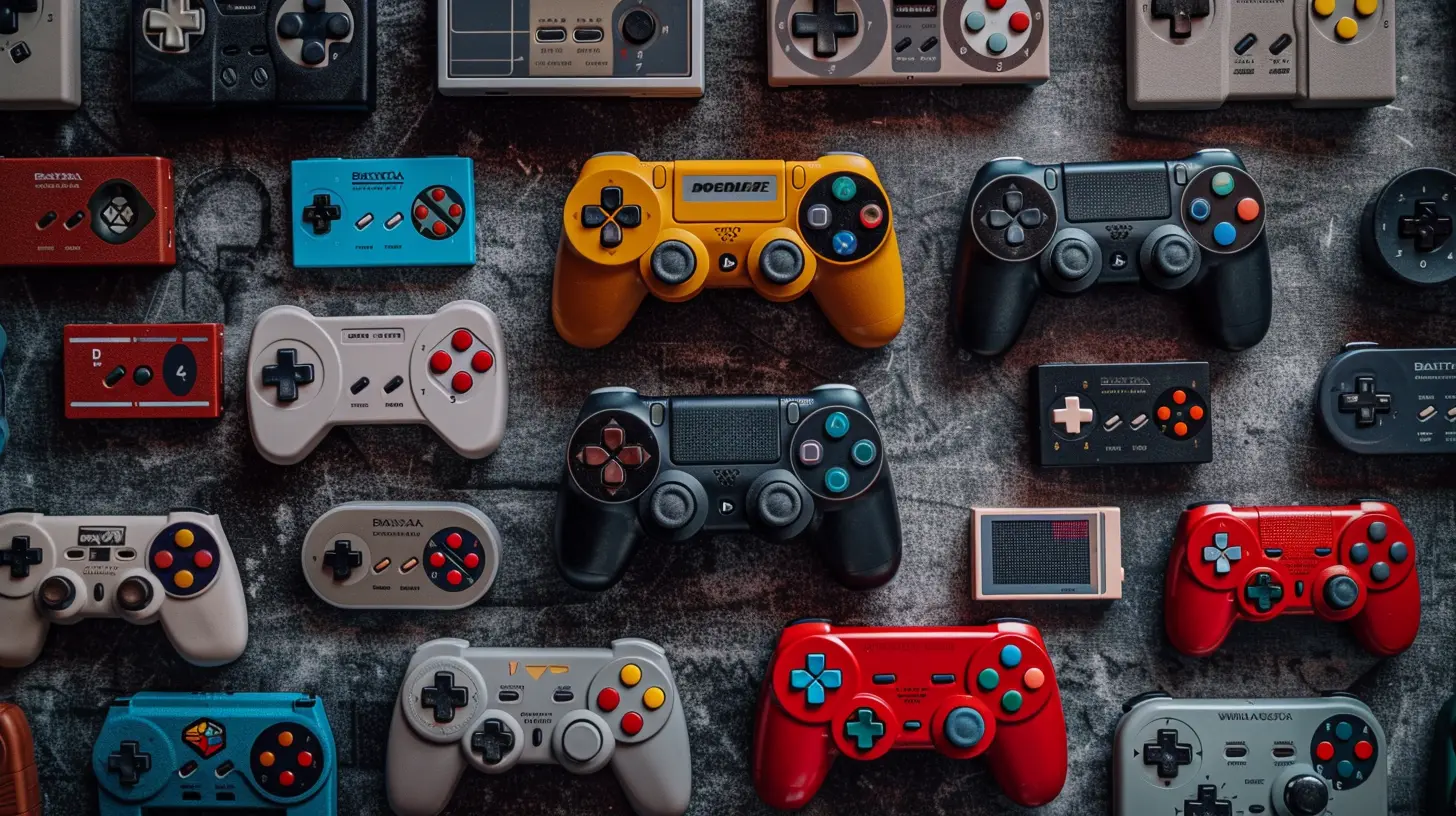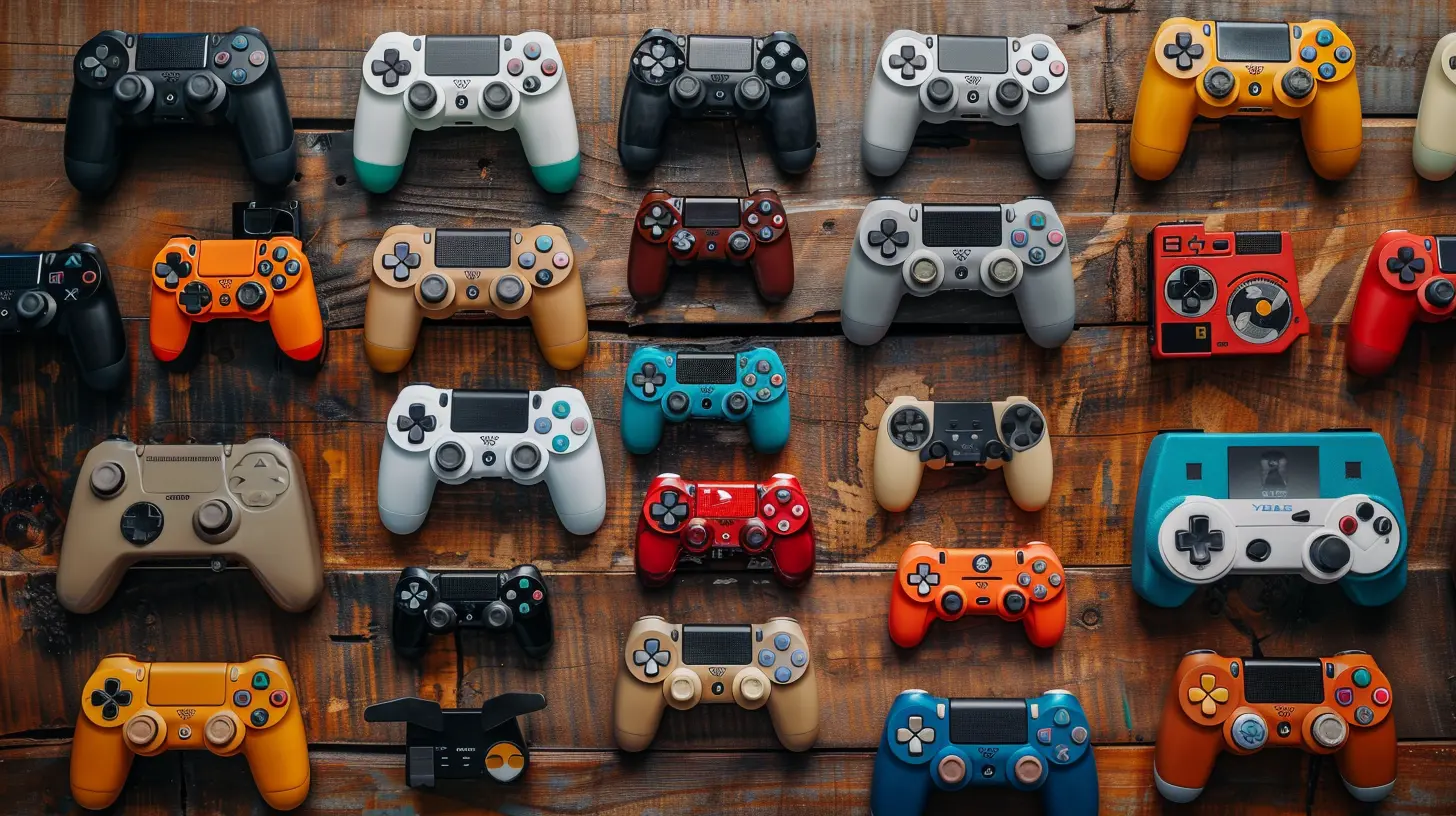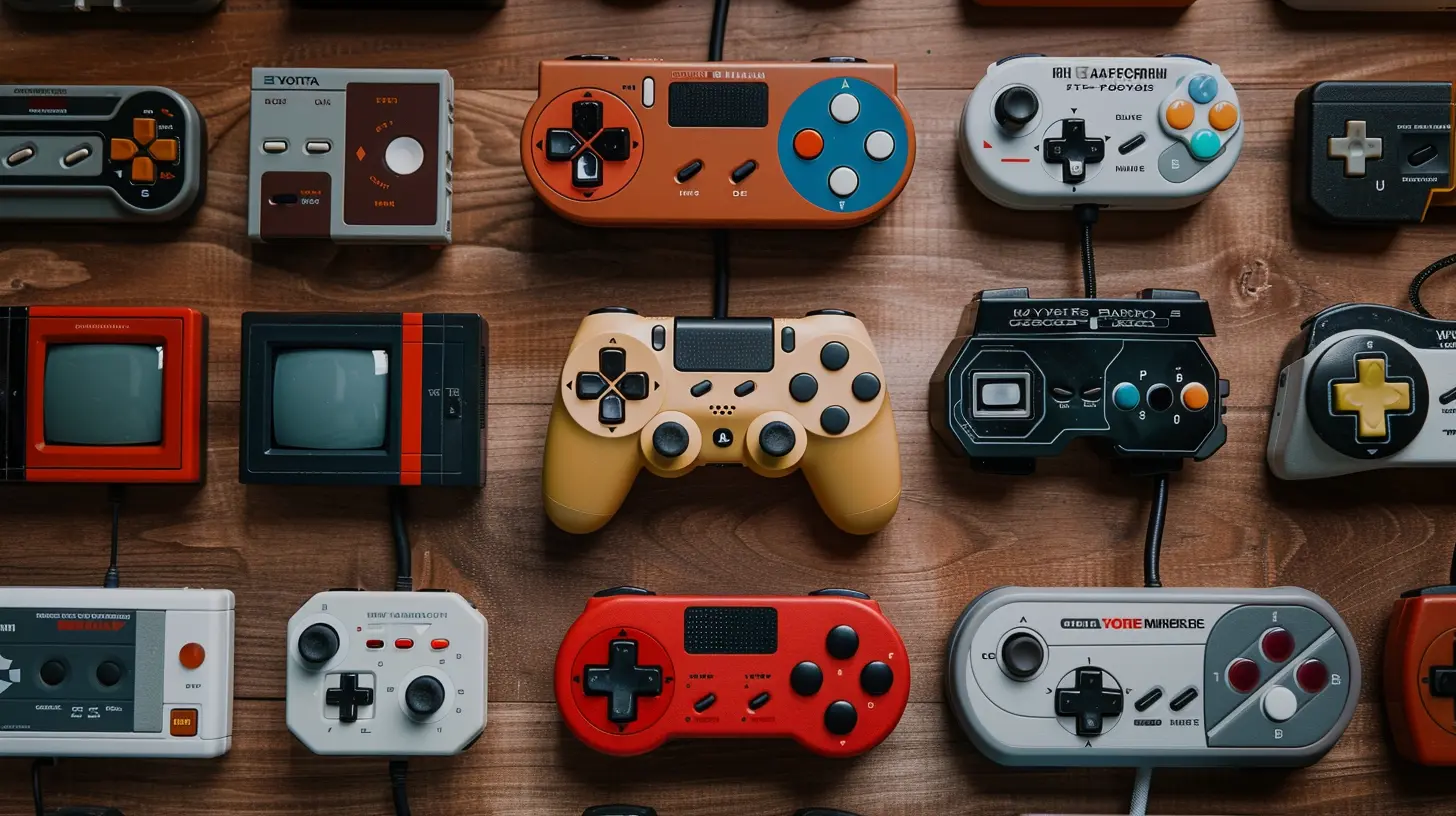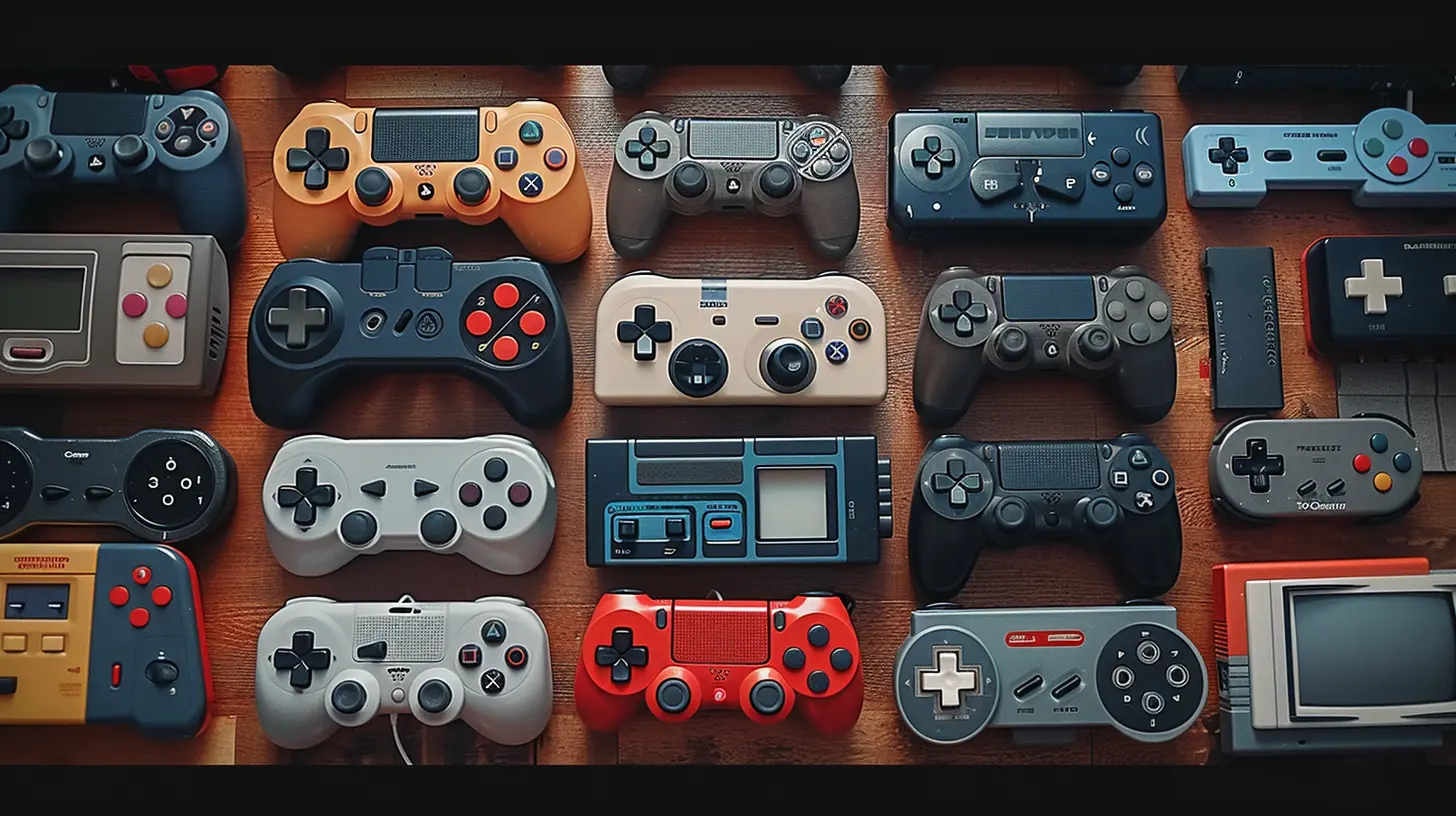Controller Evolution: From Joysticks to D-Pads
13 July 2025
Video games have been a cornerstone of entertainment for decades, and at the heart of this incredible journey is a humble but mighty component: the game controller. Whether you're exploring faraway galaxies, racing in high-octane competitions, or crushing enemies in epic battles, the controller is the bridge between you and the digital world. But have you ever stopped to think about how these nifty tools came to be and how far they’ve evolved? Buckle up, because we’re about to take a nostalgic ride through the history of controllers, starting from the original joysticks and cruising all the way to the revolutionary D-pad.
The Dawn of Gaming: Joysticks Take the Stage
Back in the late ‘70s and early ‘80s, when video games were still finding their footing, the joystick was king. If you’ve ever seen pictures of retro gaming setups, you’ve probably noticed a bulky box with a stick poking out of it. That’s a joystick—the granddaddy of all controllers.These pioneering controllers first rose to fame alongside early arcade cabinets like Pong and Asteroids. The joystick was straightforward: a lever that could move in multiple directions and sometimes came with a single button for added functions. Admittedly, it was clunky by today’s standards, but it got the job done.
Remember the Atari 2600? That iconic black joystick with the bright orange button might pop into your mind. It was the first gaming controller to make its way into living rooms, and it was everywhere. Hitting that orange button to fire your spaceship’s laser in Space Invaders? Pure joy. The simplicity of the joystick mirrored the straightforward nature of early games—move left, move right, press a button, win. Easy, right?
But as games became more complex, the joystick’s limitations started to show. Movement wasn’t always precise, and let’s be honest—prolonged use could leave your hands feeling like you just wrestled with a robot. It was clear that gaming needed more than a stick and a button.
The Rise of Buttons: Birth of the D-Pad
Enter the 1980s, where gaming was about to hit its first golden age. Around this time, developers were dreaming up games that required more nuanced controls. Players needed something more intuitive, more compact, and—let’s face it—easier on the hands. That’s when the D-pad (short for “directional pad”) entered the scene, forever changing how we interact with games.Nintendo deserves a standing ovation here. The company didn’t just introduce the D-pad; it popularized it. Designed by Gunpei Yokoi for the Game & Watch handheld series, the D-pad was a game changer (pun absolutely intended). This simple, cross-shaped piece of plastic allowed for precise movement in four directions—up, down, left, and right. And guess what? It also eliminated the awkward bulk of joysticks.
When Nintendo launched the NES (Nintendo Entertainment System) in 1983, the now-iconic rectangular controller with its red and gray buttons took gaming to a whole new level. The D-pad became the centerpiece, surrounded by an A and B button that added just enough variety for gameplay. Gamers could now effortlessly jump over pits as Mario or take down pixelated enemies as Link. The experience felt seamless, responsive, and downright revolutionary.
Why the D-Pad Worked: Function Meets Comfort
Let’s get real for a second—gamers spend hours with their controllers, so comfort matters. One of the D-pad’s biggest advantages over the joystick was its ergonomic design. Unlike the joystick, which required a full grip, the D-pad was thumb-friendly. You could play for hours without your hand cramping up. It was like switching from riding a clunky bike to cruising in a convertible. No contest.On top of that, the D-pad was just better for certain types of games. Platformers like Super Mario Bros. or side-scrollers like Mega Man came to life with the D-pad. You could make precise movements, time jumps perfectly, and land attacks with pinpoint accuracy—all without fighting with your controller.
The Evolution Within the Evolution
Let’s pause for a sec and acknowledge something important: the D-pad wasn’t static. Over the years, its basic design received a bunch of tweaks to suit different systems and genres.Take the Sega Genesis controller, for example. It featured a rounded D-pad and an additional set of buttons compared to Nintendo’s simpler layout. Heck, even Sony’s original PlayStation embraced the D-pad. Although the PS1 would later bring analog sticks (we'll get there, don’t worry), its early controllers kept the D-pad front and center.
And, of course, handheld consoles leaned hard on the D-pad. Just think about the Game Boy—it wouldn’t have been the same without that satisfying click of its D-pad. Portable gaming flourished thanks to how compact and efficient this design was. Honestly, the D-pad practically carried handheld gaming on its back.
What About Modern Controllers? Does the D-Pad Still Matter?
Fast forward to today, and gaming controllers are almost unrecognizable compared to their early counterparts. The Xbox Series X controller? DualSense for the PS5? These devices feel more like spaceships than controllers, loaded with vibration motors, adaptive triggers, and wireless connections. And yet... the D-pad is still there.Sure, it’s not the primary method of control anymore—analog sticks and touchpads have largely taken over. But dismissing the D-pad as irrelevant would be a huge mistake. It’s still clutch for navigating menus, executing combo moves in fighting games, or controlling retro-style platformers. The D-pad might be a veteran, but it’s still very much in the game.
Why the Controller Evolution Still Matters
Let’s take a step back and appreciate how far controllers have come. Think about it: we went from a single joystick and one button to controllers with triggers, bumpers, touchpads, and, yes, still D-pads. Each innovation solved problems, pushed boundaries, and brought us closer to the immersive gaming experiences we enjoy today.At the end of the day, the evolution of gaming controllers reflects the evolution of video games themselves. As games grow more complex, so do the tools we use to play them. And while it’s fun to look back at simpler days, there's no denying that today's controllers are marvels of engineering.
The Legacy Lives On
So, what does the future hold? Will we one day ditch physical controllers altogether in favor of mind-controlled interfaces or holographic projections? Maybe. But one thing is certain: the legacy of the joystick and D-pad will always be with us. These early designs paved the way for everything we have now, and let’s be real—few things in gaming feel as satisfying as nailing a move with the click of a D-pad.Next time you pick up a controller, take a moment to appreciate the history wrapped up in your hands. Whether you're button-mashing in a fighting game or pulling off a stealth move in an action title, you owe a huge thanks to the innovators who brought us from joysticks to D-pads—and beyond.
all images in this post were generated using AI tools
Category:
Retro GamesAuthor:

Madeleine McCaffrey
Discussion
rate this article
2 comments
Calder McClintock
Each evolution reflects our shifting relationship with gaming and connectivity.
October 27, 2025 at 6:00 PM

Madeleine McCaffrey
Absolutely! Each evolution shows how our gaming experiences and connections with others have transformed, adapting to new technologies and player needs.
Aisha McGinn
Fascinating journey through gaming's evolution! I’m curious—how did the shift from joysticks to D-Pads impact game design and player experience over the years?
July 17, 2025 at 3:39 PM

Madeleine McCaffrey
The shift from joysticks to D-Pads allowed for more precise control and simplified input, enabling developers to design more intricate gameplay mechanics and enhancing player experience, especially in genres like platformers and fighters.


